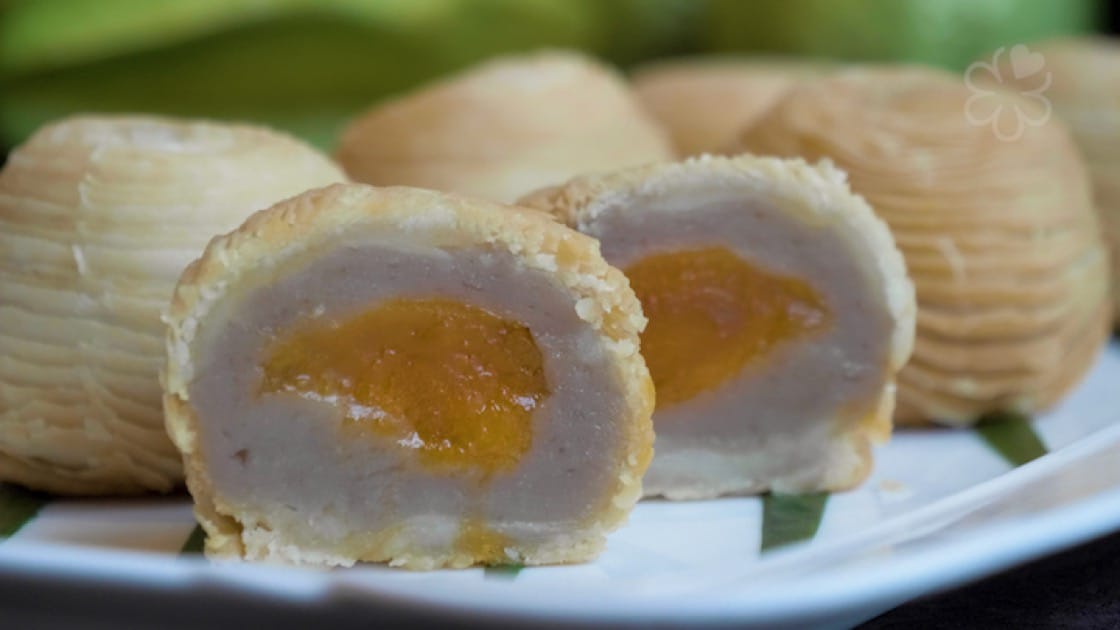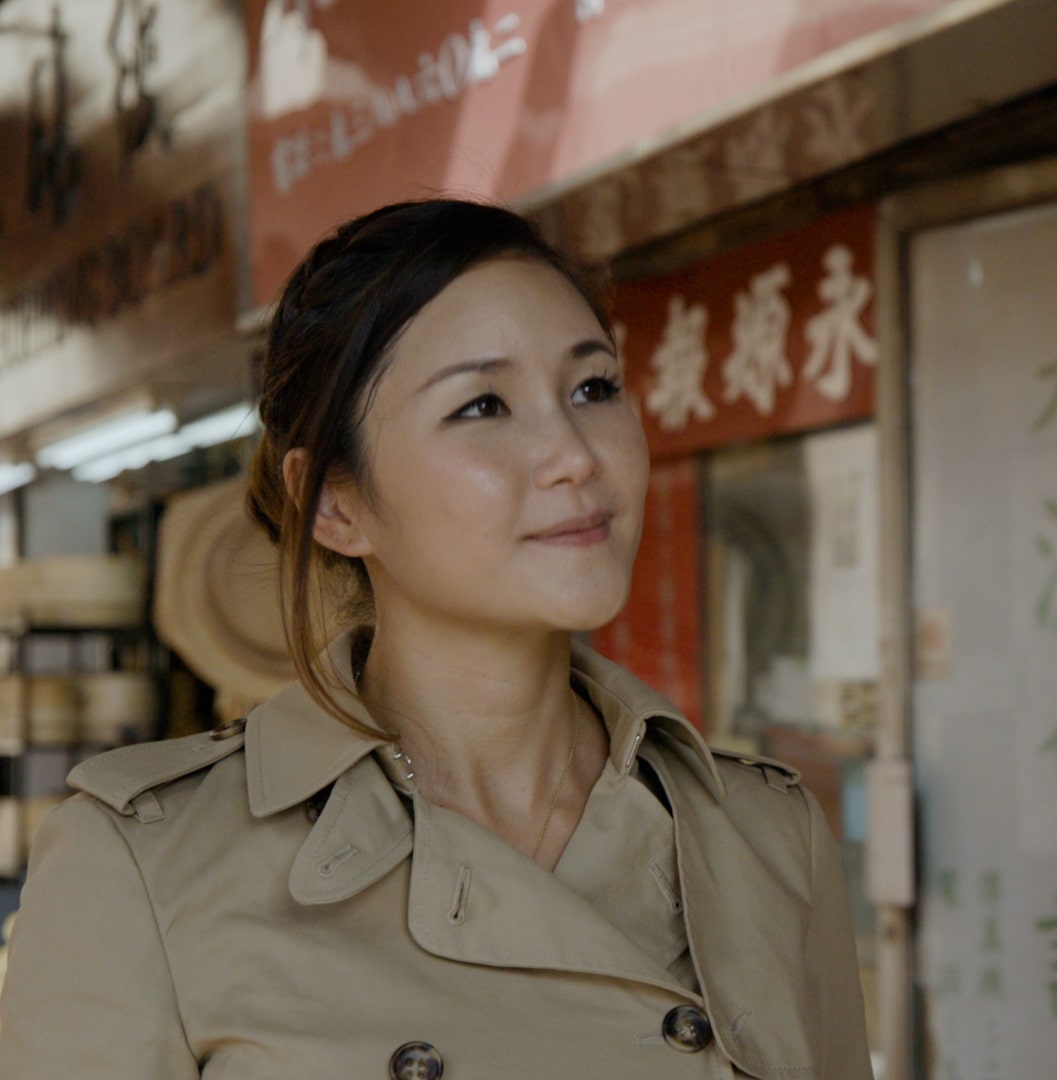It is hard picking up the Teochew mooncake made by Hui Mei Tak and not be in awe of its beauty. The golden puff pastry is structured in clean layers to suggest harmony. It is something you just know will be wonderful without actually tasting it.
“Teochew mooncake is primarily made with puff pastry and deep-fried. Every step is handmade to accentuate its exquisiteness,” said Hui, who is from Chaozhou, where the festive speciality originated.
Currently the executive chef of MICHELIN Plate Pak Loh Chiu Chow Restaurant, Hui moved to Hong Kong and has been cooking Teochew food for 30 years. His restaurant sells Teochew mooncake every year during the Mid-Autumn Festival, to the delight of fellow Teochews who crave a taste of home.
Thousand-layered Puff Pastry
We stepped into the kitchen to observe how he created such handsome puff pastry. Hui showed us two doughs he had prepared: the “water dough” made with flour and water, and “oil dough” made with a combination of flour and lard. While making the puff pastry, he needs to stack the two doughs and fold them against each other repeatedly, wrapping the “oil dough” inside the “water dough”.
The combined dough is then flattened out and rolled into the shape of a long log, before being cut into sections and flattened again. At this point, the dough is ready to hold the fillings. If you look closely enough, you will see a ring pattern hidden in the dough, which would eventually become an elegant stratum of fried dough.
“The most difficult thing in making puff pastry is finding the right proportion of ‘water dough’ and ‘oil dough’ to let the two stick together. This golden ratio differs from one chef to another and that’s why the product of every shop has its own appeal,” Hui said.

Experienced chefs know how to adjust the proportion of the dough based on the conditions of production. For example, for the “water dough” to be used on the same day it is made, it needs to be slightly drier to keep the texture right. Hui admitted his recipes are constantly updated. “The sources of the ingredients vary at different times. The strength of the flour has to be considered as well. You need to keep fine-tuning. Since I started preparing Teochew mooncake, the proportion has always been changing.”
The only constant is lard. Teochew mooncake is also called lao pia, meaning it is a cake made with pork fat. As traditional as it is, lard has largely been replaced by vegetable oils following the trend to eat more healthily. But to Hui, “using lard to make Teochew mooncake is a given.” He believes lard is not bad for the human body, if purchased from a supplier of good reputation and used in the right amount. Maintaining the original way of preparation is important. “After all, lard-made mooncake is more fragrant.”

The Symbolic Festive Delight
Hui revealed that the Teochews eat mooncakes of their region all year round. The fillings can be savoury or sweet, some classic ones being mashed taro and mung bean. Popular creations of his include ingredients like candied winter melon and sesame seeds. The period around the Mid-Autumn Festival is the high point of Teochew mooncake consumption. The exuberance associated with the festival most definitely fuels people’s appetite.
“Normally, we treat the mooncake as a snack and don’t think much about it. But when the Mid-Autumn Festival comes, we eat it for a taste of love, and with respect. These special days are meant to be spent with family.”
Hui still remembered vividly his encounters with Teochew mooncake in his hometown when he was a child: “We took out the tea set and enjoyed the mooncakes with tea. Since they contain lard, we often ate them along with star fruit and Chinese olive.”

Now, as a father of four, he still strives to introduce Teochew mooncake to the younger generation, even if the atmosphere of the Mid-Autumn Festival in Hong Kong might not be as strong as before.
“I hope this would let them learn about this festive food. Now there are more food options available and children don’t get as excited about mooncakes. But every year when it comes time for the festival, I want to keep everyone happy.”
While many serve Teochew mooncake at room temperature, it can be warmed in the microwave to bring out the fatty aromas.
Hui shared: “It tastes the best when it’s warm.”

























